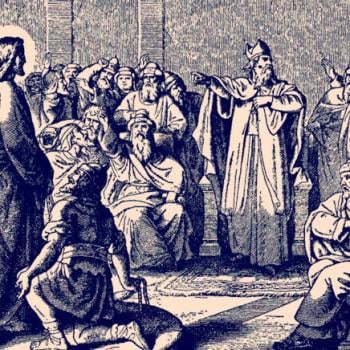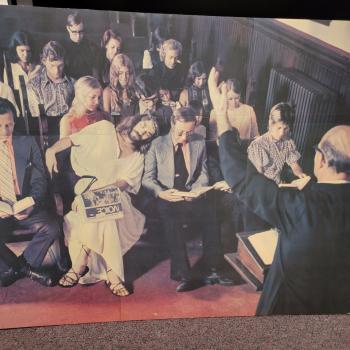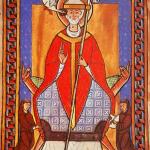If you are wondering where in the world the phrase Maundy Thursday comes from, wonder no more. It actually comes from the phrase Mandatum Thursday, or loosely translated ‘mandate’ or ‘commandment’ Thursday. It refers to the commandment from John 13 which you see in the picture above. Unfortunately, it was assumed that John 13 is about what transpired on Thursday of Holy Week, but historically this is probably incorrect. There is not footwashing episode on Thursday according to all three earlier Gospels, and furthermore, the time reference at the beginning of John 13 suggests this event transpired earlier in the week.
Be that as it may, Jesus is said in John 13 to have left his disciples with a ‘mandate’. ‘Love one another, as I have loved you’. This is no small order, but of course also in the Farewell Discourses of John 14-17 Jesus promises to leave them with help— a parakletos, or advocate aka– the Holy Spirit.
Traditionally, Maundy Thursday (the English garbled form of the Latin), has been a day to remember the Last Supper, the prayer in the garden of Gethsemane, the betrayal with a kiss, the taking captive of Jesus, and his abandonment by the male disciples— betrayal, desertion, and a threefold denial are the coup d’grace. It is on any showing a somber season.
The way that I have tended to observe this is to follow another remark of Jesus’ on Thursday night— I will not drink again of the fruit of the vine until I drink it new in the Kingdom’. In other words, I observe a fast from Thursday night to Sunday morning. My Sunday morning I am ready to turn from fasting to feasting. This leads to a question.
What do you do, to celebrate Holy Week? Do you have any special family traditions? How often during Holy Week do you go to church services (there are services on Thursday, Friday, and Sunday at the least in most church traditions). What most moves you about the whole Holy Week celebration?
Sometimes we make the mistake of only focusing on the more joyful notes and not on, for example, what Jesus says in John 13— ‘greater love has no one than he lay down his life for his friends.’ The call to a life of self-sacrifice and surrender and cross-bearing is at the heart of what Jesus was trying to teach his disciples shortly before he died. Here is a poem I once wrote about all this—
IMITATIO CHRISTI
(in memoriam—Thomas A Kempis May 1, 1471)
The cruciform life to which we are called
In the crucible of life we give you our all
Shaped and sharpened
Enlightened and lead
In the footsteps of Him
Who rose from the dead.
By dying to sin and living anew
We boldly embody Immanuel who—
Through his grace has brought us,
With his word has taught us,
By his blood has bought us,
— Lord Jesus Christ.
May 1, 1990

















